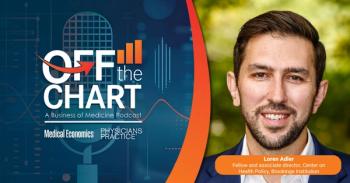
What Patients Want in Billing and Payment
A recent survey explores how patients and practices don't see eye to eye when it comes to billing and payment.
With patients assuming increasing responsibility for the costs of their healthcare services, it's important to understand the best ways to yield faster payments while preserving patient satisfaction. In this rush to update billing practices, however, some healthcare organizations overlook a key factor - what it is that patients really want.
Patients are increasingly looking for clearer information about what they owe and easier ways to make their payments. As with other aspects of their lives, patients are keen to use technology to resolve outstanding payments and issues more quickly. In response to these and other rising consumerism behaviors, stakeholders across the industry are exploring new ways to streamline billing and patient payments. However, a recent national survey, the "
Snail mail is getting outpaced
Outside of healthcare, most companies have shifted away from paper bills and moved toward electronic billing. Let's face it, people are paying everything from cable bills to college tuition online. Unfortunately, healthcare organizations are way behind the curve with almost 90 percent of surveyed providers still mailing paper patient statements. This is creating a substantial divide because patients are eager for their healthcare providers to leave paper behind and have come to expect a high-level of automation based on their other service and retail experiences. More than half of those surveyed (52%) in the "Patient Payment Check-Up" would prefer to be billed electronically - and this percentage is higher among younger patients.
One roadblock to electronic billing is the provider perception that patients are uncomfortable sharing their email addresses. This viewpoint appears to be flawed however, because nearly 80 percent of patients say they would be willing to provide their email addresses, paving the way for electronic statements and easier payments.
By offering electronic statements, practices can better respond to patient preferences, giving them clear opportunities to understand what they owe and make prompt payments. Not only does this improve the speed and likelihood of payment, it also enhances patients' perceptions of the practice - giving the impression that the organization is forward-thinking and patient-centered. There are operational benefits as well. Less paper, less waste and greater efficiency can all result in a smoother billing process. Another way healthcare organizations can update billing practices is to make payments more automated and low-touch for the patient.
Swipe it, charge it, automate it
Providers only looking at only their side of the billing cycle may get mixed messages about patients' desire to resolve their accounts. For example, according to the aforementioned survey, providers and patients disagree on how long it takes patients to pay their healthcare bills. More than half of surveyed providers indicate it takes the average patient more than three months to pay his or her bill in full, while only 18 percent of patients claim it takes that long. This may be due to patient confusion caused by multiple statements - the patient may think he or she pays after receiving the first bill, not realizing he or she has already received one or two statements in the mail. This confusion, while unfortunate, presents a prime opportunity for healthcare organizations to update payment processes to get paid faster and increase patient satisfaction.
To eliminate confusion and speed payment, organizations may want to consider providing a credit-card-on-file (CCOF) option in which they automatically bill the patient for charges that remain after payer remittance, up to a certain dollar amount. Many providers believe their patients would not be willing to submit a credit card for automatic payment, fearing patient sensitivity around sharing financial data. However, patients appear to be amenable to this option, especially since it's a common practice in other service and retail environments. In fact, more than three-quarters of patients say they would provide their debit or credit card number to be charged one time up to $200 after claim adjudication if they were simply asked by their provider.
CCOF is a secure, easy way for patients to pay their outstanding healthcare balances without having to look at confusing paper bills, or take time out of their day to contact their physician's office. As patients demand more automated solutions and payment options, providers who save credit cards on file have a prime opportunity to resolve most patient bills automatically, while also increasing satisfaction by giving patients what they want.
Providers have some work to do
There are many interesting takeaways from the survey, and looking at it from a broader perspective, one overarching theme emerges - patients are seeking a more transparent and easy-to-navigate financial experience, but organizations seem hesitant to update payment processes due to perceived patient sensitivities. Organizations that implement patient payment solutions to address these preferences will see significant benefits in terms of patient satisfaction, faster payments and stronger revenue cycle performance.
Jeff Wood is the vice president of product management at
Newsletter
Optimize your practice with the Physicians Practice newsletter, offering management pearls, leadership tips, and business strategies tailored for practice administrators and physicians of any specialty.








